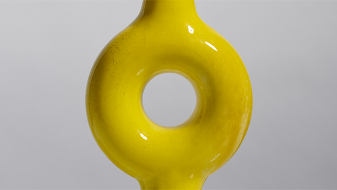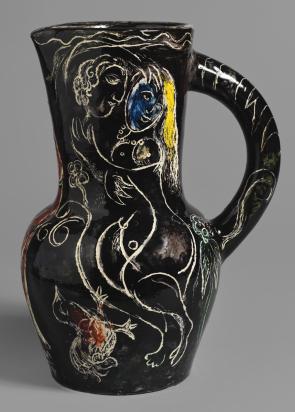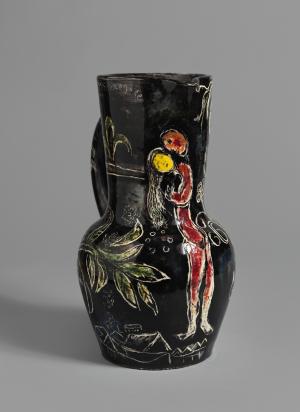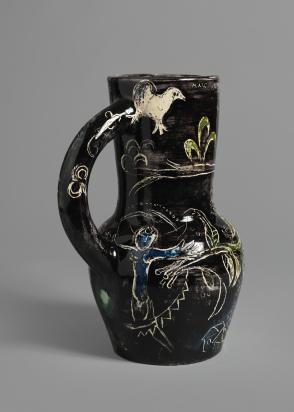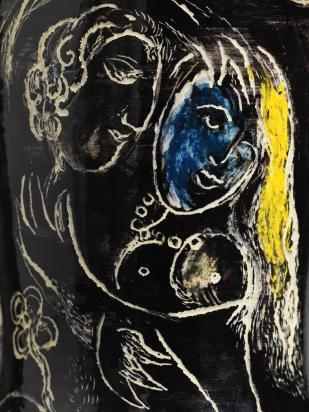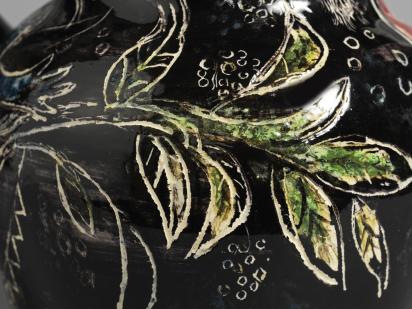Standing out for its atypical color and expressive power, Black Vase combines utilitarian design with free, complex decoration. The rather classical shape is the only example of this kind in the output of Chagall, who favored constant variations in his three-dimensional pieces. Attesting to the feverish creative context, a very similar piece, Picasso's Owl Pitcher, also made in the Madoura studio, dates from the same year. People, birds and plants are engraved horizontally in a circular movement on a jet-black background with a metallic glaze,1 forming a vibrant frieze with variations in scale and size. A tall couple seems to dominate the composition, occupying the entire height of the vase. A curly-headed man in profile—probably a self-portrait—and a blue-faced woman with long yellow hair are wrapped in each other’s arms: two entwined dancing figures resembling a faun and a nymph. Their nude bodies hug the shape of the vase, whose structure—neck, belly, foot and handle—resembles human anatomy, like a female silhouette in motion, with an ample, assertive arm. Another, smaller couple with a single red body is more abstract in treatment. To the right of the handle, a blue body with outstretched arms suggests a crucifixion figure. The same motif can be found on Crucifixion, a 1952 vase featuring a matte black background—a rare color in Chagall’s ceramics2 — religious subject matter, sober decoration and the hieratic figure of Christ wearing a tallit. Cheeky birds and lush vegetation run across the surface of the vase alongside a variety of geometric motifs. Below, the rooftops of Russian cottages and a small outline of Vitebsk's Annunciation Church can be made out. The black background brings out the contrasting contours and vibrant colors of the figures incised on white clay, lending the scenes a nocturnal, almost cosmic character.
The vase’s shape, frieze-like composition, black color and graceful dancing figures echo the Greek Attic ceramics Chagall admired on his trips to Greece in 1952 and 1954: “I went to Delphi, the islands and Poros. I visited all the museums. The ones in Athens are magnificent. I contemplated the ancient paintings, the beautiful vases decorated with wild bulls on black and ochre backgrounds. What a delight they are to behold!”3 Chagall drew on the ancient collections in the Athens National Museum to create his Mediterranean pieces, such as Matte White Vase (1956), while keeping his unique visual language. He may have borrowed from the Archaic period’s black-figure style, which peaked in the second century BCE with black-painted figure drawings and the use of incisions, as in the Attic amphora by the painter Nessos (620-610 BCE, A 1002).4 Red-figure ceramics from the Classical period (c. 530-300 BCE), characterized by red figures on a black-painted background, may also have inspired the artist. An example is this Attic oenochoe called A Man Putting His Child on a Swing by the painter from Eretria (425-400 BCE, ΒΣ 319).5
Ceramic
Black Vase
(Vase noir)
Keywords:
Related article
Suzanne Ramié, trial by fire
Ambre Gauthier - 06/2024
